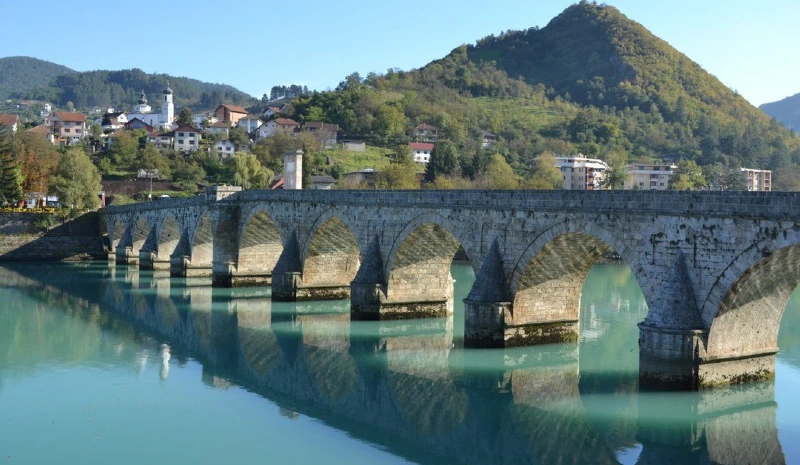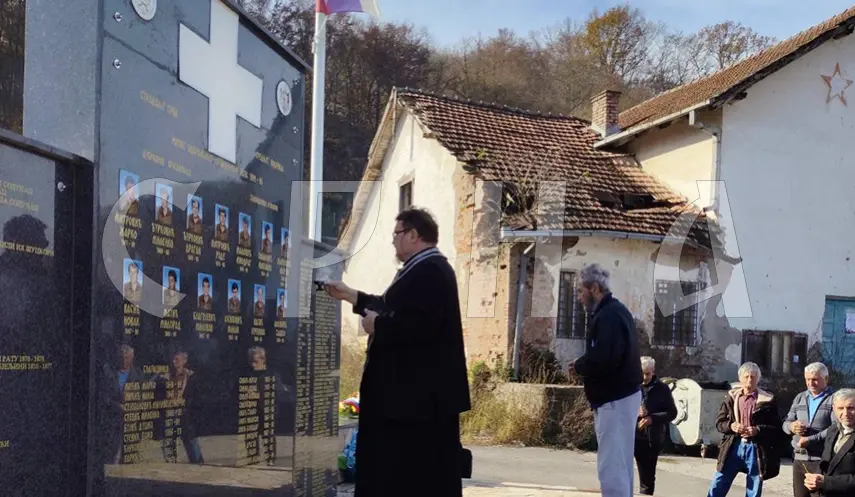BRIDGE ON THE DRINA - SYMBOL THAT CONNECTS PAST AND PRESENT
Republika Srpska - Višegrad - cultural heritage
03/29/2025
13:20

VIŠEGRAD, MARCH 29 /SRNA/ - The Bridge on the Drina is a symbol that connects the past and the present, and in its long history it has suffered and been rebuilt several times, and its central part of the gate still bears traces of time and stories about this marvelous building, Professor Divna Vasić stated for SRNA.
Vasić stated that the Mehmed Paša Sokolović Bridge, a monumental endowment of the grand vizier from the 16th century, was the work of the Ottoman architect Mimar Sinan Kodža.
Construction lasted from 1571 to 1577, and the bridge is still considered one of the most significant monuments from the Turkish period in the Balkans.
"His stone arches have been connecting the banks of the Drina for centuries, testifying to history, legends and human destinies," said Vasić.
She mentioned that in the central part of the bridge there used to be a guardhouse, a one-story house made of oak wood, in which there was a military crew in charge of controlling the passage of passengers and goods.
"It was like that until 1886, when this dilapidated building was removed. The projecting and lofty gate of the bridge has always been a place of gathering, meeting and talking, a place of romantic fantasies and sadness, a place where generations change and history is recognized," said Vasić.
She stated that, according to historical data, the bridge was repaired twice during Turkish rule, around 1644 and 1875.
According to her, after the great flood that hit Višegrad in 1896, the Austrians rebuilt the fence of the bridge, and a detailed repair was carried out in 1911.
She stated that the great suffering of the bridge occurred in the First World War, when two pillars were demolished, and a temporary iron structure was placed in that place. The restoration of that part of the bridge was carried out in the year 1939/1940 In the Second World War, German forces demolished as many as four pillars, so the bridge was reconstructed again in the period from 1949 to 1952.
Vasić said that significant renovations of the bridge were carried out in 1981, while the last major restoration was carried out in 2015, with the support of the Turkish Agency for International Cooperation and Coordination.
She reminded that, apart from historical facts, numerous legends and traditions are connected to the bridge, its origin and existence, as recounted by the Serbian writer and Nobel laureate Ivo Andrić in the novel "The bridge on the Drina".
Vasić stated that one of the most famous legends is about Stoja and Ostoja, the twins who were built into the foundation of the bridge so that the building would be permanent. There is also a legend about the boatman's villa, which hindered the construction, as well as the legend about Rade Neimar, the builder who was remembered as a symbol of top-quality architecture.
"The bridge is not only a building that connects the coasts, but also a symbol that connects the past and the present, peoples and cultures, time and events, people and their destinies. The bridge is the identity of this place - its fate is also the fate of Višegrad," said Vasić.






